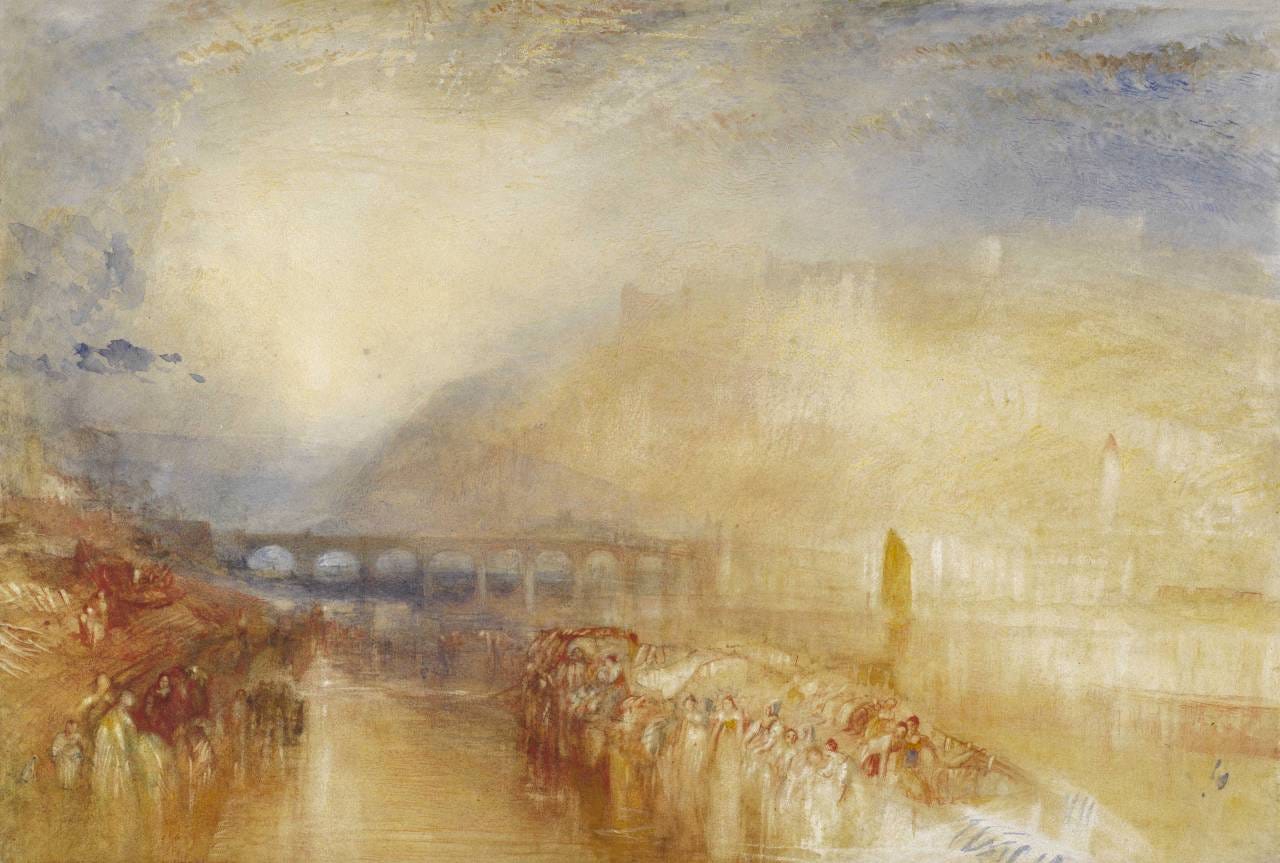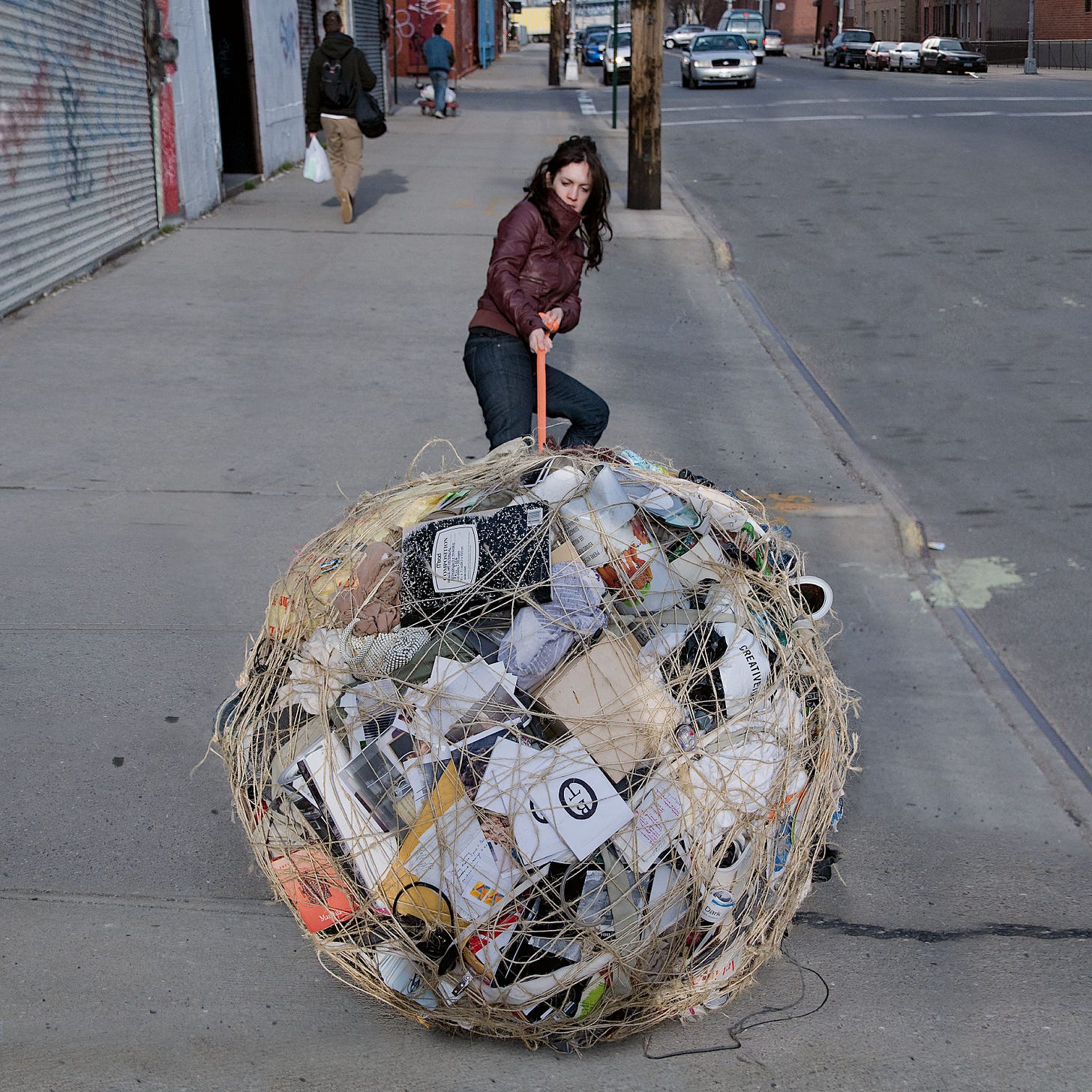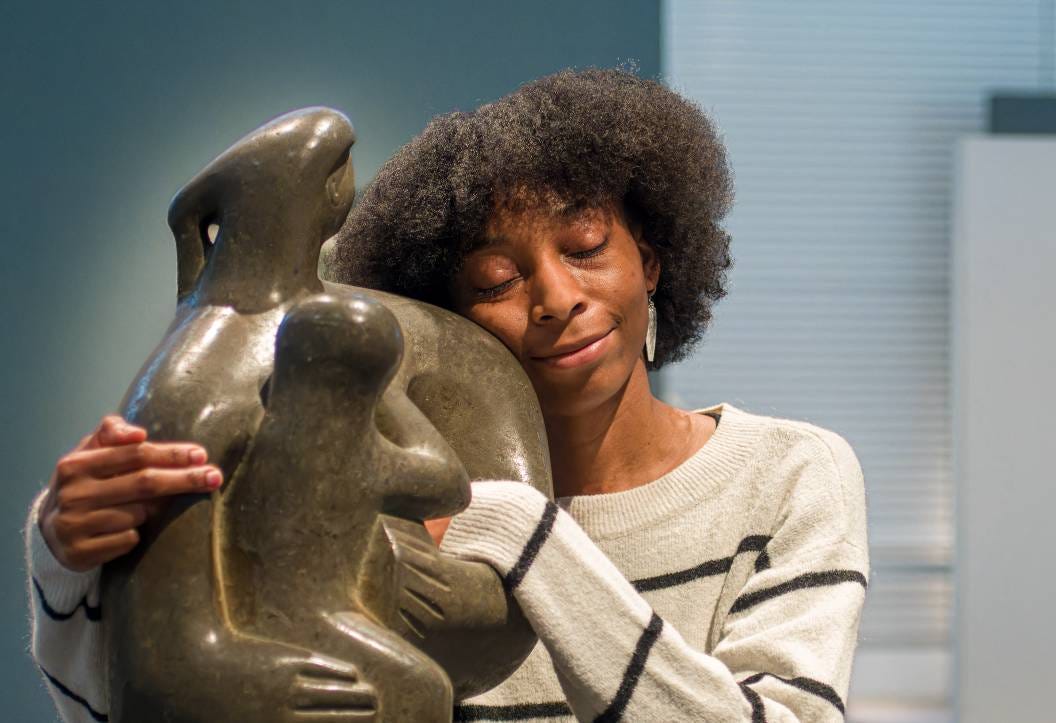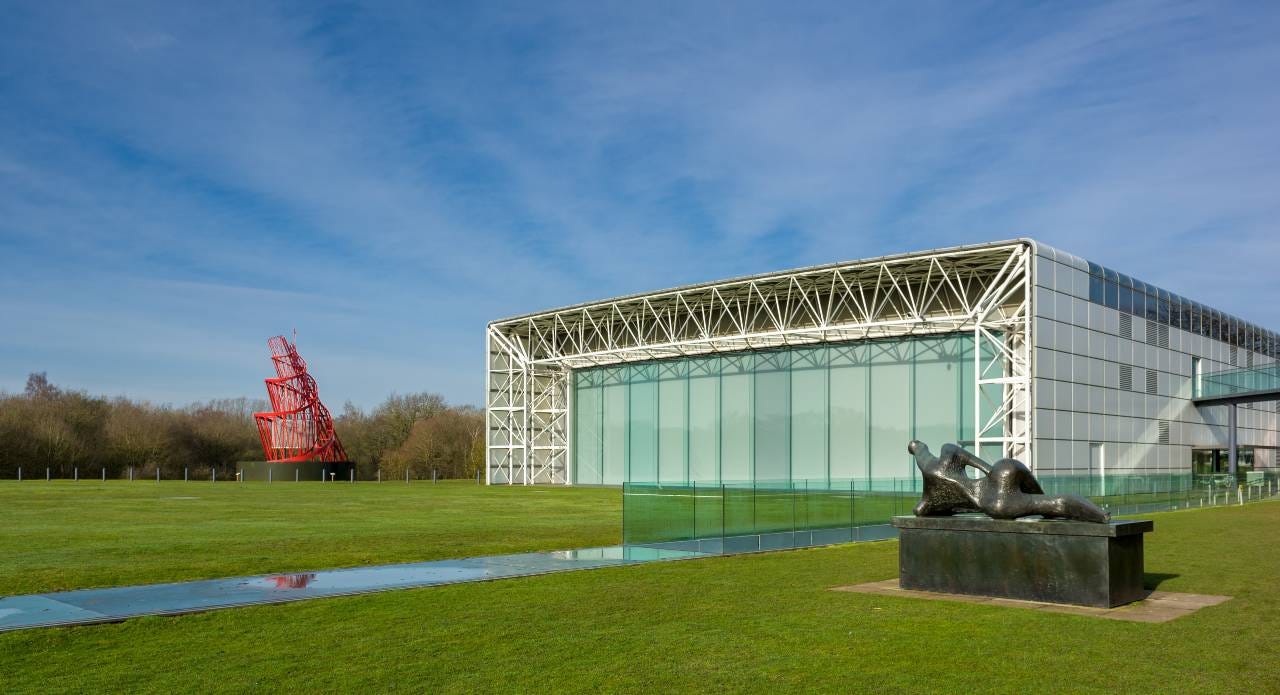Marketing is not a dirty word
PLUS: Sainsbury Centre Director Jago Cooper on his radical shake up
Hello.
I’m back in your inbox with the final feature packed edition of 2023, and my penultimate newsletter of the year — your last weekly news round-up will land on Friday.
Following the launch of my new opinion column the 250 Take with Ed Vaizey on the Parthenon, I’m delighted to follow it up with an excellent bite-sized read on the importance of museum marketing and a plea for it be taken more seriously in 2024. Written by Christina Lister, who has over 20 years experience in this field, she makes it clear that marketing is not a dirty word.
For this week’s interview, I speak to Dr Jago Cooper, who has shaken up Norwich’s Sainsbury Centre over the past 12 months in his role as Director. We talk about his new exhibition programming and seeing artworks as living beings.
Plus, my last Hotlist of 2023 has an unsurprising festive flavour.
Now let’s dive in!
— maxwell
— This is the 55th newsletter I’ve sent you in 2023. If you enjoyed them or found them useful, please consider donating £5 as a thank you. I’m grateful for every penny.
The 250 Take
In the second edition of my new opinion column from guest writers, marketing consultant and author Christina Lister argues — in 250 words — why museum marketers need to champion their role more than ever over the coming new year.
💬 In 2024, museums must learn that marketing is not a dirty word
“The museum marketing budget is often one of the first to be cut when times are tight. Detractors see marketing as unnecessary, full of jargon-filled gimmicks, or just about throwing up some social media posts. Or as being fixated with the promotion of consumption and the Disneyfication of museums, detracting from a museum’s core purpose.
But rather than undermine a museum’s mission, good marketing supports it. It helps museums to understand, connect with and build relationships with audiences – existing and new. It can raise awareness, drive visits, generate engagement, foster a sense of community, support fundraising and income generation, and much more.
Good marketing helps museums to stand out in a crowded marketplace that is brimming with an ever-evolving array of competition for our audiences’ attention, interest, time, money, and support.
So, as we head into 2024, it’s up to museum marketers to champion marketing as a crucial strategic function. We need to advocate internally for its seat at the table and the impact that investment in marketing can have. Values-driven marketing can and must also dovetail with the work the museums sector is doing on sustainability, accessibility, and inclusivity.
Faced with a continued turbulent external environment, marketers are well-placed to understand unsettled and evolving audience trends, tap into the zeitgeist and ensure that museums remain relevant. Ultimately, marketing helps museums to value audiences and be of value to audiences, which is absolutely fundamental today more than ever.”
— Christina’s new book Marketing Strategy for Museums is a practical guide to developing and delivering marketing that supports museums’ missions and goals. Buy your copy here.
If you’re connected to the world of museums, galleries, art and heritage and have a take that you could write in 250 words, get in touch with me at hello@maxwellmuseums.com
The Hot List
My curated round-up of what’s new to see, do, watch, read and more. From the UK — and around the world.
EXHIBITION
1️⃣ Rose, Rose, Rose à mes yeux. James Ensor and still life in Belgium from 1830 to 1930 | Mu.ZEE, Ostend, Belgium
One of the most original 19th century Flemish painters gets his first ever exhibition focused entirely on his still life. Some fifty works by James Ensor are on show, demonstrating his stylistic development, from dark and classical to colourful and expressive.
now open — until 14 April 2024 | find out more here
ART TRAIL
2️⃣ Walking with The Snowman™ at Knole | Knole, Kent
Inspired by the timeless festive tale The Snowman™, discover 12 giant sculptures in the parkland and courtyards of the 400-year-old former archbishop’s palace. For even more festive fun, see the property decorated for Christmas too.
until 7 January 2024 | find out more here
CHRISTMAS LATE
3️⃣ Christmas at the Natural History Museum | London
Join the Natural History Museum for a festive Friday late. There’s wintery workshops, meet-the-scientist sessions, mulled wine and mince pies, as well as the opportunity to see the Wildlife Photographer of the Year exhibition.
Friday 22 December, 18:45 | book tickets
NEW YEAR’S EVE
4️⃣ New Year at the National Portrait Gallery | London
Ring in 2024 at the revamped National Portrait Gallery. See London’s famous fireworks from the panoramic views of the Portrait Restaurant, or get the party started with jazz, dancing and champagne in Larry’s in the gallery’s vaults.
Sunday 31 December | find out more and book
EXHIBITION
5️⃣ Turner in January | National (Royal Scottish Academy), Edinburgh
Scotland’s collection of Turner watercolours was left to the nation under strict guidelines to only ever be displayed during January, when light levels are lowest. Catch these 40 masterpieces for the only time in 2024.
opens 1 January 2024 | find out more

The Big Interview
The students of the University of East Anglia are lucky. Their campus on the very outskirts of Norwich has — amongst the sports halls, the vending machines and the car parking spaces — a full-on world-class art collection. There’s Pablo Picasso, Edgar Degas, Leonora Carrington, Jacob Epstein, Alberto Giacometti, Amedeo Modigliani plus many more — and Francis Bacon’s everywhere. They’re all housed in a vast early Norman Foster building, and for good measure, there’s a sculpture park attached too. The biggest question is how students get any work done.
But this year, the Sainsbury Centre for Visual Arts has had a HUGE shake up, and it’s torn up the conventional ways of presenting a museum. Exhibitions are now programmed in seasons around ‘big ideas’, admission fees have been scrapped, and it’s become the first museum in the world to recognise art as alive. Yes, really.
The Sainsbury now asks visitors to see objects as living entities. They are encouraged to be guided by feelings and instincts, through a series of interventions such as the opportunity to hug an actual Henry Moore sculpture. It’s very bold — but the Chief Art Critic at the Times Laura Freeman said it “was one of the most moving experiences of my gallery-going life.” Reviews don’t get much better.
This radical overhaul is the idea of Dr Jago Cooper. He was appointed Director in 2021 after a decade as a senior curator at the British Museum and after a dozen documentaries for the BBC. He’s just marked his two-year anniversary and has announced the spring 2024 exhibition season all about the concept of truth.
Here I interview Jago to ask how this shake up has been received, how he convinced the museum’s stakeholders, and ultimately, did he ever have any concerns about such radical moves?
***
Congratulations on two years leading the Sainsbury Centre. How have they been?
Brilliant. It was great joining back in 2021, the team here are fantastic and what they have been able to achieve with the pretty radical relaunch this year has been incredible to be part of.
Your first major change was to launch the Centre's new Living Art initiative this spring. How has that been received?
The Living Art reimagining of what a museum can be has gone really well. It is quite a bold opening statement when visitors arrive at the front desk — “we understand the artworks here as living entities and we would like you to meet them in a different way than you might in other museums or galleries, much more like another person than an inanimate object” — but what we have built to help people forge those new relationships is real and powerful, because it really works.
The proof is in the genuine engagement you can witness by just watching people in all the galleries. Visitors are behaving, building, acting, and thinking differently than I have seen in other places and all the feedback qualitatively and quantitively is really good. In a short space of time we have broadened the demographics of who comes, changed behaviour in the space, increased dwell time, and opened up how people feel free to think differently within the museum space.
At the end of the day, independent validation is the best type, and even the toughest art critics gave us a good write up when they came down in May and physically experienced what we have created so we must have got something right!
The one thing I/we have failed to do though is getting enough people to know about what we have done but we are operating on a shoe-string budget and I have spent it on creating great experiences here rather than on marketing them to be honest.
And following that you launched a new way of programming your exhibitions. Tell me about the new approach.
Our Living Art relaunch in May makes it inevitable that a new approach to programming would emerge from that different way of understanding the collection.
We now take the most important questions in people’s lives that we found out by asking them, and then we take one six-month season to explore them. We are trying to activate and empower art to help people tackle these questions — intriguing, informing and inspiring visitors in an open and welcoming museum space.

You've just announced the second season of this new format. What can visitors expect to see in the spring?
Our first question in 2024 is What is Truth?, in which visitors can expect to explore this question in many ways. Our different shows explore how AI is stealing our soul, iconic photographs are coming to define our understanding of history, fake news and how to know what it is, and the truth about our own identity — it really is quite a season!
Some flesh on those bones include Jeffrey Gibson, in his first UK solo show, will be exploring how we know our true selves and to ask what extent are we the product of the social circumstances and cultural context we are brought up in? Can we find out who we might be if we grew up differently?
In 2024, Gibson will be the first Indigenous artist to represent the United States of America at the Venice Biennale. His show at the Sainsbury Centre, I Can Choose, will incorporate murals, paintings, textiles and historical objects, and include text drawn lyrics, poetry and his own writing, to prompt the visitor to consider how Indigenous cultures have historically been displayed within museums and the journey to redefining oneself within that space.
The Camera Never Lies will show some of the most iconic photos of history, disrupting the idea that image is truth, but in reality a memory creating self-reinforcement of cultural perspective.
The changes you've made can all be described as radical. Did you ever have any concerns about making so many significant moves?
When I talked to my Board, or the staff, or to the enormous number of stakeholders required to change the governance, structure, well everything really in the years leading up to the public announcement… I obviously didn’t focus too much on the doubts or concerns, but yes, of course, when it came to the relaunch and how it would actually be received I had a lot of concerns about how it would go down.
I have total confidence in our approach and the genuine authenticity of our attempts to pull it off. But how that gets represented in the press, or by peers across the cultural landscape is out of our control, particularly if people write about it without actually coming here for themselves and experiencing what we have created for themselves.
So, no real concerns with what we were doing and whether or not it was a good idea, but definitely some come concerns with how it might be represented to the wider world.
And how did you bring all the gallery's many stakeholders with you?
There were an enormous amount of presentations, talks and meetings to persuade an enormous range of people along the way. Between 2021 and end of start of 2023 I had hundreds of meetings, talks, lectures and the Board needed a lot of data/solid arguments to accept the steps needed, but ultimately the project works and so it makes it easier to take people with you if it works…… also, it is a bold concept but that radical and rule-breaking intent chimes perfectly with the original ambition of the Sainsbury centre founders, which is why I think this is one of the few museums in the country where you might have a chance of pulling off some tangible and radical institutional change — and not just words around it.

The Centre's exhibitions are now Pay What you Can. Previously charging for shows brought in £350,000 a year according to ITV News. How have you made up that shortfall in income?
The pay-if-and-what-you-can scheme is working well — we track marginally beneath pre-existing ticketing target in terms of ticketing revenue but make it up in the café, shop and other revenue streams as a result of increased dwell time, increased numbers, broader demographics, better institutional buy in if you will.
Beyond the finances though, it is the genuine ability to open up access and engagement and, by extension, get a growing number of people to join our Sainsbury Centre community which really matters.
We now have one open dynamic and huge arts landscape across the museum and sculpture park that means anyone can come and explore as they like. The interesting, dynamic and best ideas and art are no longer behind a paywall, which means new audiences are coming, and once they come, they want to be part of what we are doing — be that through visiting, telling people about what we are doing, getting involved, becoming a member, it just grows the museum momentum and community of allies along our journey.
What are three artworks/objects you think visitors should not miss?
We really have one of the best and most diverse art collections in the country and so everyone will find their own three favourite works from prehistory to the present. I love that equality of platform no matter where and when art was created displayed equally together across the museum.
Three of my current favourites are the Olmec Were-Jaguar stone figure that features in our Dear Art relaunch film, the new Modigliani Sculpture that just arrived this summer, and Awol Erizku’s Neon Nefertiti that shines out across our Living Area giving an energy and embodiment of the diversity and dynamism of our collections.
Finally, if any of my readers dream of one day leading an institution, what's your advice to them?
My best advice would probably be not listen to me, as my route has been a bit unusual, and there are so many different ways to be a leader, that I think the best is to just do what you enjoy and is natural to you, really.
The other advice is that no matter where you are in an organisation, including director, you need to think about how you manage up as well as down. You only have as much power to enact change as you do to persuade those both above and ‘below’ you in the organisation, to give you. As director you are at the pinch point between the two so you need to work really hard keeping that communication in both directions really strong.
— The What is Truth? season opens on 17 February 2024. The current season of shows Planet for our Future continues into next year.
— Now you’ve read my final interview of 2023, please consider donating £5. Many hours go into these interviews, and so I gratefully receive every penny.




